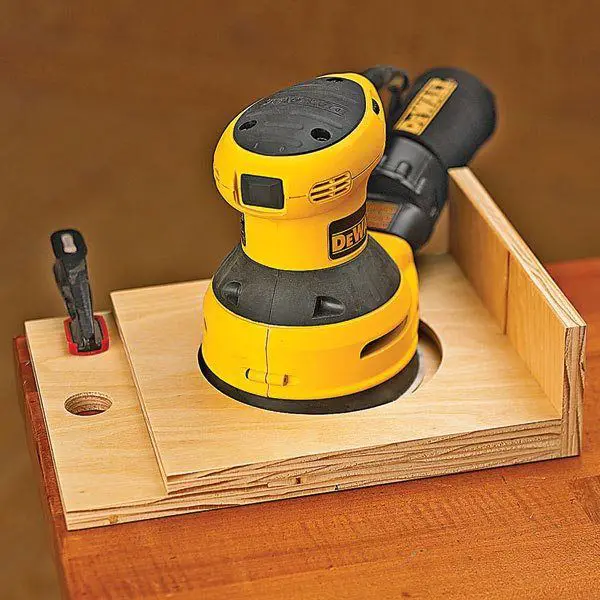Power Tools
Best Wood for Outdoor Bar Top
To find the best wood for your outdoor bar top, you obviously need to consider your style preferences. However, it is also important to select a wood that’s resilient, not just against rot and pestilence, but bumps and scratches too.
It is arguably more important than the wood you choose withstands the test of time, even as it serves its practical and aesthetic functions. It doesn’t matter if you’re building a patio bar, a portable one, or a full bar. You need to start by picking the right wood.
Four Best Woods for Outdoor Bar Tops
In your search for good “outdoor” wood, you’ll find that reclaimed wood is cheaper and provides a rustic look. You might have to scavenge from old pubs and restaurants, but it’s usually a worthy pursuit since you pay much less for quality wood.
You can easily find reclaimed pine, oak, and chestnut at an affordable price. You have to know a little about each type of wood to make an informed choice.
Teak
Teak is hardly available in large pieces and always fetches a hefty price. However, its water and rot resistance more than makes up for its exorbitant initial costs.
Some say teak is the best wood for outdoor projects, and they’re not wrong. It can resist bumps and dents, bears a rich, warm, exotic look, and is naturally rot-resistant. It needs very little in the way of maintenance, so it basically takes care of itself.
Chestnut
Chestnut is best used in small pieces because larger pieces are prone to warping. In many cases, reclaimed chestnut is the best wood for this particular job. It is a dramatic golden brown that immediately adds character to the room. A chestnut bar top carries tropical vibes that pair well with beaches and pools.
Mahogany
Mahogany is an excellent wood for projects because it’s easy to work with. It machines, sands, and finishes well, but it’s not cheap. It exists in many different types and is usually a sign of luxury, so it’s a good pick for a posh outdoor bar. Though it is relatively soft, the brown-red wood possesses qualities that make it ideal for outside living.
Walnut
Most woodworkers would say that walnut is the best wood for an outdoor bar top because it is the hardest to dent. Its shock resistance and availability in a range of colors make it a go-to for all types of bar tops.
Walnut can be found in golden, honey-brown, medium, and dark brown colors. It is known for knotholes and a prominent texture that is just part of its personality. It combines well with other countertop materials, especially granite and marble.
Pine
If you get reclaimed pine from a good source, you’ll have wood from hundred-year-old trees. It doesn’t get more durable or reliable than this. Pine is a rigid wood that performs fairly well against the elements and withstands rot.
It has a gorgeous amber color that makes an excellent historic bar top for your home or business. Pine is also quite versatile in the aesthetics department. Sanding it smooth lends it an elegant traditional look, but leaving all the marks creates a modern distressed appearance.
Oak
Reclaimed oak has a classic dark brown hue that stands out without overpowering the room. When seasoned with age, it’s right at home in a vintage-style outdoor bar, especially when paired with brick.
Oak is a popular choice because it fits into all styles, residential and commercial included.
Sealing a Wood Bar Top
One surefire way to increase the lifespan of your wood bar top is to apply a waterproof topcoat. It can be polyurethane, a natural sealer like tung oil, or epoxy.
Applying a sealer protects your bar more than anything, and you can do it in these few steps:
Step one – Sand the entire surface of the bar, first with 50-grit sandpaper then with 85-grit sandpaper. Use a sanding block to cover the bar top from edge to edge, including the lips of the edges.
Step two: Use a lint-free cloth to wipe off any sanding residue on the bar. Afterwards, pour some mineral spirits on a piece of lint-free cloth and wipe it down again. Allow the spirits to dry for about ten minutes or until the surface feels bone dry.
Step three: Prepare your sealer by pouring it into a bucket and stirring it thoroughly to achieve even consistency.
Step four: Use a foam paintbrush to apply a thin layer of sealer onto the bar top. Follow the grain of the wood and start at one end of the bar. Use the foam brush’s angles to cover corners and edges. Leave the sealer to dry for at least six hours.
Step five: Lightly sand the bar using 220-grit sandpaper. Afterwards, clean off the residue using a lint-free cloth dampened with mineral spirits.
Step six: Repeat the last two steps for a second coating, then give the bar top a maximum of 48 hours to dry completely.
Maintenance Kit for Outdoor Bar Top
Self-Leveling Epoxy
Epoxy resin provides a clear, glossy finish that protects your bar top from rot, moisture, and insects. It comes in two portions: the resin and the hardener, which you mix in a 1:1 ratio before application. This epoxy is virtually bubble-free and provides rock-hard protection and a glossy finish.
Urethane Spray
This urethane aerosol spray uses special UV blockers to protect the wood from the sun’s fading effects. It is a must-have for outdoor wood projects, including your bar top. It creates a protective barrier against moisture and contains oils that leave room for the wood to expand and contract.
Foam Paint Brushes
This 25-pack of foam brushes offers tremendous value for disposable applicators of epoxy. They come in different sizes to suit different applications and can be used with paints as well. All the brushes come in one size, so it is important to get the size that you need. Best of all is that they are dirt-cheap in case you need another set.
Why You Should Trust Us
At Woodworking Tool Guide, we know one size doesn't fit all! We cater to every woodworker, from beginner to pro, with insights and recommendations tailored to your skill level, project needs, and budget. We take the guesswork out of choosing the right tools, whether you're tackling your first crafting a masterpiece for the ages. So grab your chisel, join our community, and let's build something amazing together!
Woodworking Tool Guide wasn't just born, it sprouted from a seed of passion for the craft. What started as a joyful exploration blossomed into a trusted online haven for fellow enthusiasts like you. We pour our love into meticulously chosen review selections, meticulous hands-on testing, and lab-backed insights, all to empower you with reliable, comprehensive information you can build on. So, grab your tools, trust our guidance, and let's build something beautiful together!
Passion-Driven Expertise
Our journey started with a shared love for woodworking. The team behind the Woodworking Tool Guide is comprised of individuals who are not just writers but passionate woodworkers themselves. This shared enthusiasm ensures that our content is crafted with a deep understanding of the craft and an authentic appreciation for quality tools.
Top Tool Guides Online
Woodworking Tool Guide has rapidly ascended to become one of the premier online destinations for tool guidance. Our commitment to excellence and the accuracy of our information has positioned us as a reliable source for both beginners and seasoned woodworkers seeking trustworthy advice on the best tools for their projects.
User-Centric Approach
Our content caters to every woodworker, from rookies just starting out to seasoned pros tackling intricate projects. We tailor our insights and recommendations to your skill level, project needs, and budget, ensuring you find the perfect tools to match your unique woodworking journey. So step into your workshop, grab your tool belt, and let Woodworking Tool Guide be your trusted companion as you craft your masterpieces.
Continuous Support and Innovation
Woodworking is an ever-evolving craft, and so is our commitment to supporting you. We are dedicated to bringing you the latest information on woodworking tools, techniques, and trends. Our team is actively working to expand our content and bring you more valuable insights, ensuring that you stay well-informed in your woodworking adventure.
Hands-On Experience
Ditch the endless research rabbit hole! At Woodworking Tool Guide, we believe in actionable advice, not armchair analysis. We get our hands dirty, putting every tool through its paces in real-world woodworking scenarios. Whether it's the precision of a table saw, the versatility of a router, or the tactile satisfaction of a handplane, we test for performance, durability, and user-friendliness. No more sifting through dry specs – we deliver practical insights you can trust to transform your woodworking dreams into reality.
Woodworking Tool Guide isn't just a review site, it's your trusted companion on the sawdust-filled path to woodworking mastery. Our expert team, led by veteran David Jones, meticulously tests and explains tools in terms you understand. We cut through the jargon, bias, and confusion with real-world insights and honest evaluations. Join our passionate community, where decades of experience, cutting-edge knowledge, and shared love for the craft come together to guide you every step of the way. So grab your chisel, buckle up, and let's embark on this exciting woodworking adventure, together!








